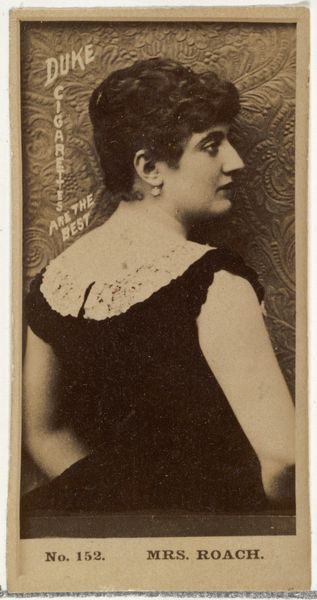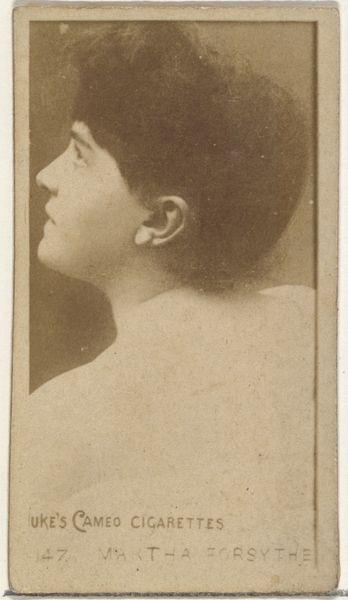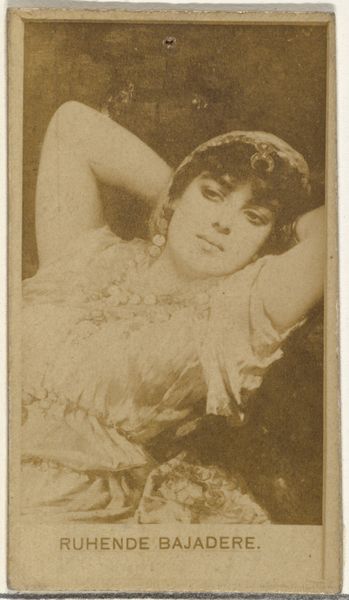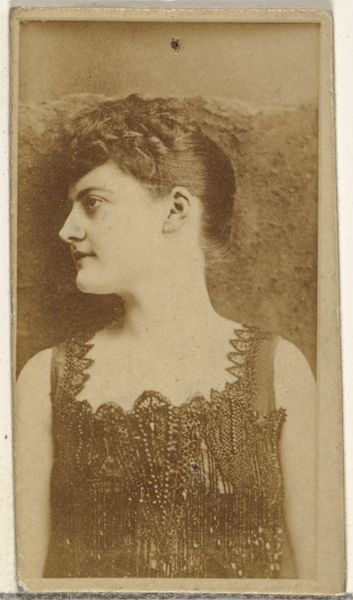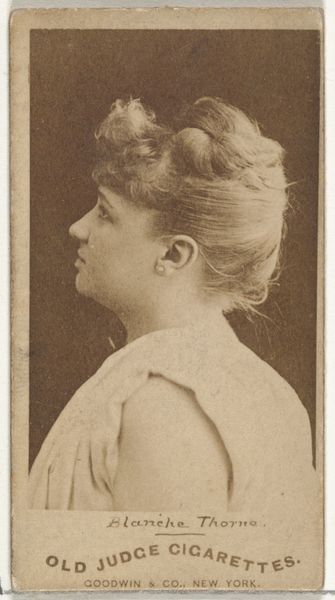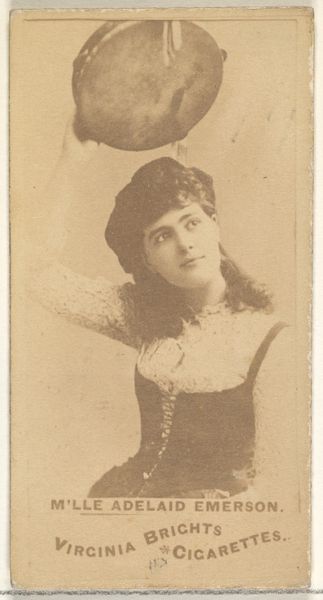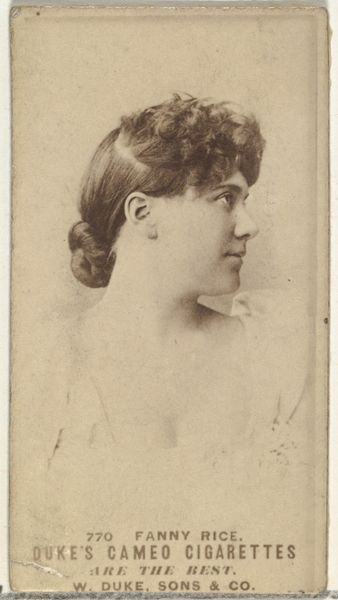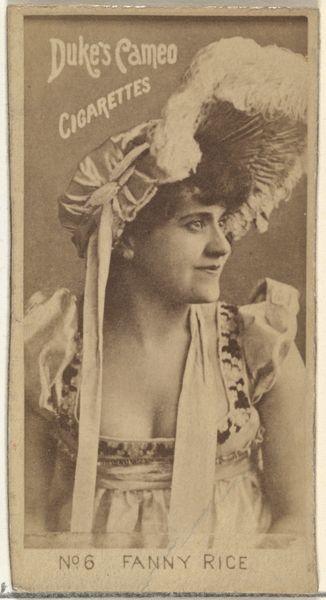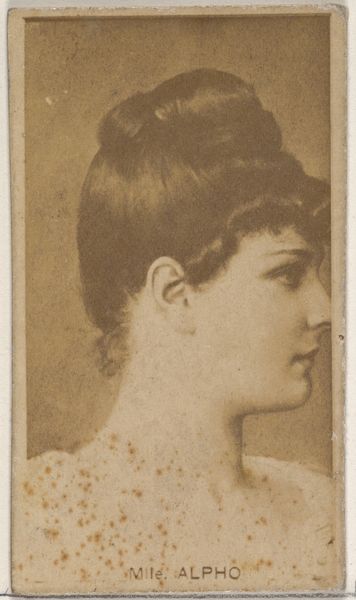
Lasouche, Variettees/ Depoix, Gymnase/ Marguerite Hood, Variettees/ Alex Martins, from the Actors and Actresses series (N45, Type 4) for Virginia Brights Cigarettes 1885 - 1891
0:00
0:00
drawing, print, photography
#
portrait
#
drawing
#
still-life-photography
# print
#
photography
#
historical photography
#
19th century
#
men
#
genre-painting
Dimensions: Sheet: 2 3/4 x 1 3/8 in. (7 x 3.5 cm)
Copyright: Public Domain
Editor: This is a trade card titled "Lasouche, Variettees/ Depoix, Gymnase/ Marguerite Hood, Variettees/ Alex Martins, from the Actors and Actresses series (N45, Type 4) for Virginia Brights Cigarettes," made sometime between 1885 and 1891 by Allen & Ginter. It looks like a composite photograph or a print of photographic portraits. I find the format interesting; it resembles a collection or an index. What stands out to you about this piece? Curator: It's a fascinating artifact, less for the individual portraits and more for what it reveals about late 19th-century industrial processes and consumer culture. Think about it: photography, a relatively new technology, is being harnessed for mass-produced advertising. How does the mass production of images change our relationship with representation itself? Editor: I hadn't thought of it that way. It feels so different from a fine art portrait in a museum. So, this card wasn’t necessarily about artistic expression? Curator: Precisely. It was about promoting Virginia Brights Cigarettes. The ‘art’ lies in the clever use of popular imagery – actors and actresses – to sell a product. Consider the means of production here – the paper, the printing process, the distribution networks. Each aspect tells us something about the society that created and consumed it. Also, how the images themselves were produced as a photograph and a drawing. Editor: That’s a really different way of thinking about art. I usually focus on the subject matter or the artist’s intentions. Curator: But the material conditions – the economic, social, and technological forces – shaped the subject matter and the artist's intentions. We need to ask, what work does this image perform? It sells cigarettes, certainly, but also reinforces certain social values and norms about celebrity and consumption. Editor: I see now. This card becomes almost a microcosm of the late 19th century! I guess I always thought of art as separate from commerce, but clearly, they are intertwined. Curator: Indeed. Studying such mass-produced items reveals how art is woven into the fabric of everyday life, often in ways we don't immediately recognize.
Comments
No comments
Be the first to comment and join the conversation on the ultimate creative platform.
